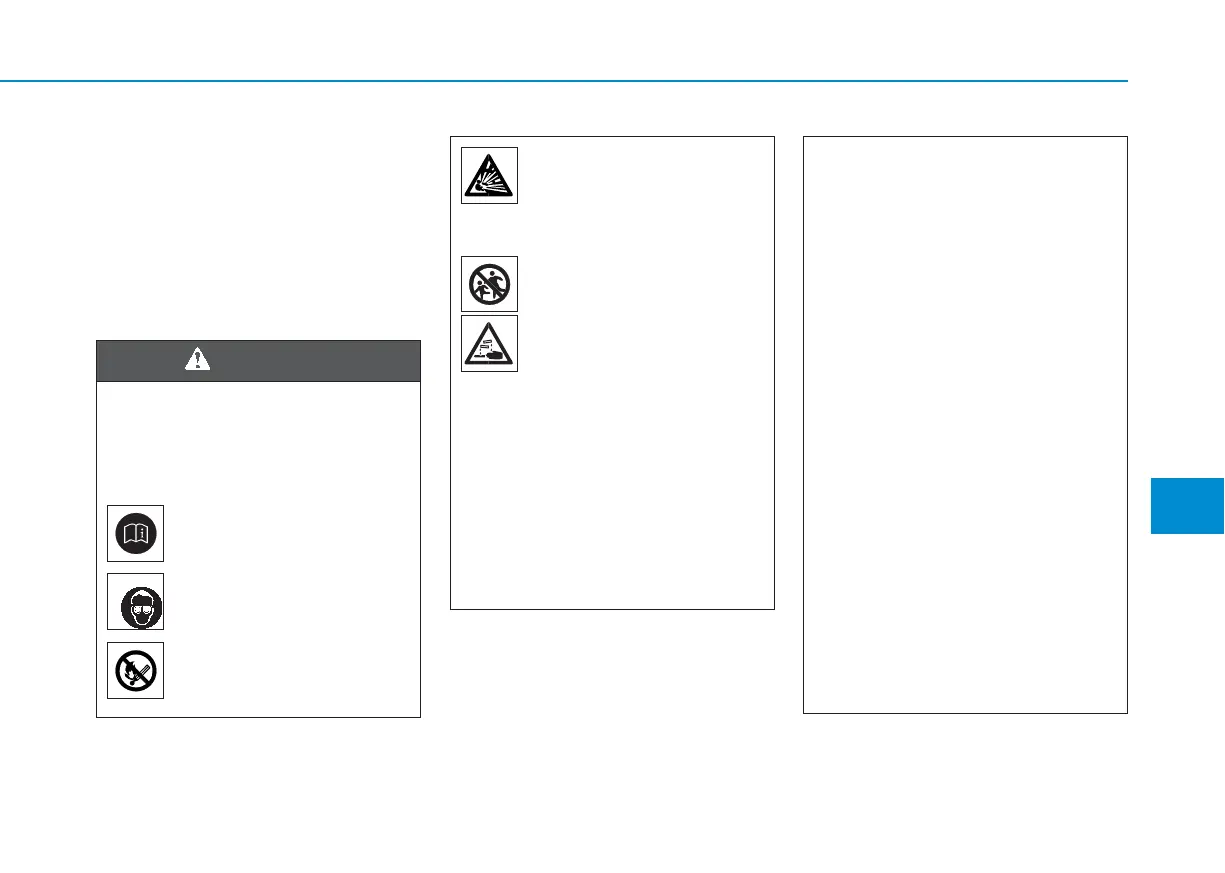6-5
What to do in an emergency
6
JUMP STARTING
Jump starting can be dangerous if
done incorrectly. Follow the jump
starting procedure in this section to
avoid serious injury or damage to
your vehicle. If in doubt about how to
properly jump start your vehicle, we
strongly recommend that you have a
service technician or towing service
do it for you.
• When lifting a plastic-cased
battery, excessive pressure
on the case may cause bat-
tery acid to leak. Lift with a
battery carrier or with your
hands on opposite corners.
• Do not attempt to jump start
your vehicle if your battery is
frozen.
• NEVER attempt to recharge
the battery when the vehicle’s
battery cables are connected
to the battery.
• The electrical ignition system
works with high voltage.
NEVER touch these compo-
nents with the engine running
or when the ignition switch is
in the ON position.
• Do not allow the (+) and (-)
jumper cables to touch. It may
cause sparks.
• The battery may rupture or
explode when you jump start
with a low or frozen battery.
To prevent SERIOUS INJURY or
DEATH to you or bystanders,
always follow these precau-
tions when working near or
handling the battery:
Always read and follow
instructions carefully
when handling a battery.
Wear eye protection
designed to protect the
eyes from acid splashes.
Keep all flames, sparks,
or smoking materials
away from the battery.
WARNING
Hydrogen is always
present in battery cells,
is highly combustible,
and may explode if ignit-
ed.
Keep batteries out of
reach of children.
Batteries contain sulfu-
ric acid which is highly
corrosive. Do not allow
acid to contact your
eyes, skin or clothing.
If acid gets into your eyes, flush
your eyes with clean water for
at least 15 minutes and get
immediate medical attention. If
acid gets on your skin, thor-
oughly wash the area. If you feel
pain or a burning sensation, get
medical attention immediately.

